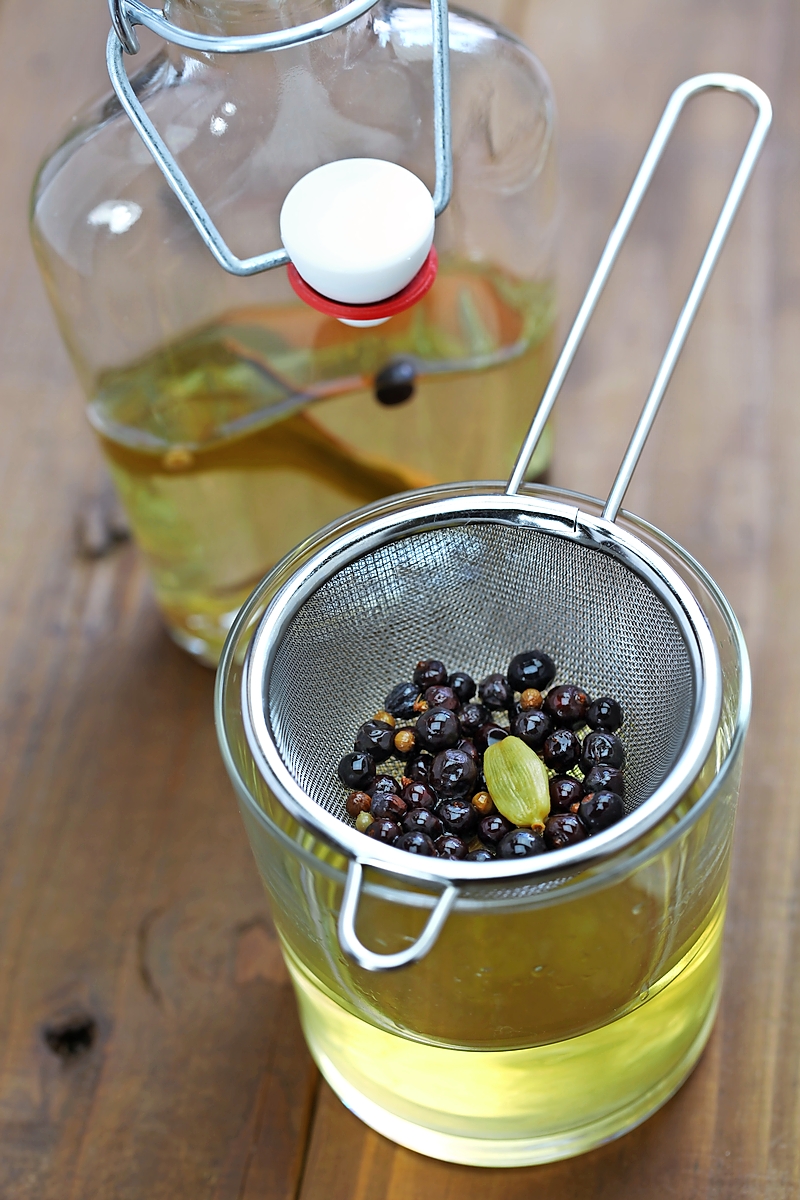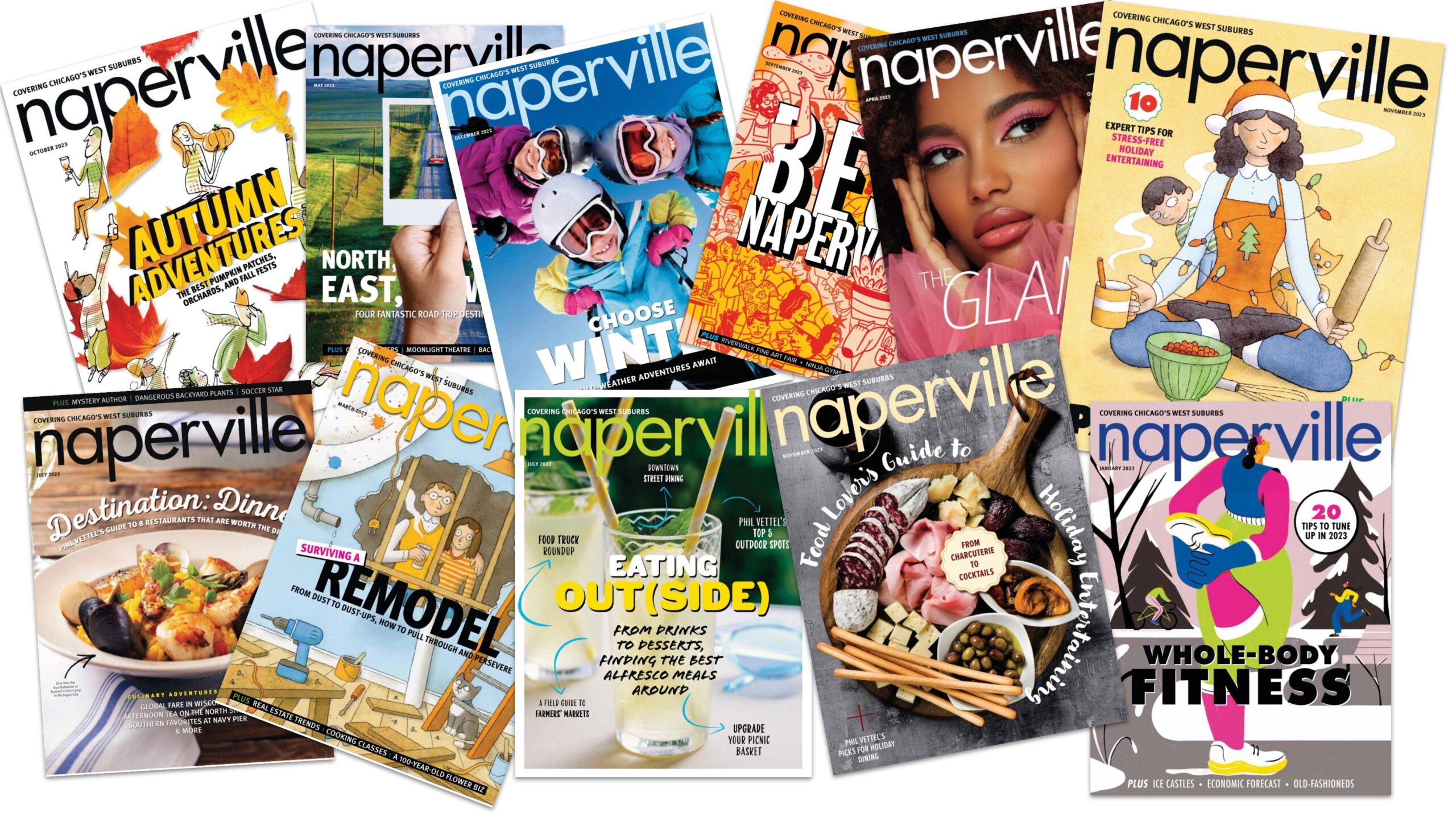Infuse Your Booze
By Michelle Dellinger
Appears in the March 2019 issue.

Instead of purchasing an expensive infused vodka from the store, consider creating your own flavored spirits. With just a few supplies and ingredients, you can experiment with flavors and combinations that may not be commercially available, saving money in the process.
We tapped Bien Trucha beverage director Patrick Timmis for some advice to get us started, as well as an at-home citrus infusion recipe perfect for a cold-weather dash of vitamin C.
Timmis says that each of the Bien Trucha restaurants usually offers a cocktail using infused spirits. “We’ve done a few infusions at Santo Cielo,” says Timmis, “and we do plenty of chile infusions at our Mexican restaurants [Bien Trucha, A Toda Madre, and Quiubo]. Spicy drinks are really trendy right now.”
Although it might sound intimidating, infusing alcohol is easily doable at home. “You can absolutely infuse the base spirit in your favorite drink,” encourages Timmis. “An old-fashioned is a perfect example—there is a lot you can do with whiskey.”
Although most infusions are done with fruit, herbs, or peppers, another lesser-known infusion ingredient may surprise you: fat. “Bacon fat washing works great with whiskey,” Timmis says. The process includes adding oil (such as olive) or grease (such as bacon or chorizo) to the liquor, letting it sit for a few hours, and freezing. The base spirit won’t freeze, but the fats will solidify, making them easy to remove. Scrape out the fat solids, strain the liquor, and bam—bacon-flavored whiskey.—MD
Immersed in flavor
Beverage director Patrick Timmis’s guide to making boozy cocktails more flavorful
Gather
Base spirit Vodka, tequila, and midlevel whiskey are my personal favorites. I would recommend staying away from gin or any other preflavored spirit, as the more complex the base spirit, the more difficult it will be to highlight the flavors of your infusion. Also, don’t spend an exorbitant amount of money on your base spirit.
Canning/Mason jars You will need jars that can seal tightly for the infusion process. Infusing in a larger bottle, or a glass container with a spigot at the bottom, works well. At home, you can also use the original spirit bottle.
Ingredients for infusing Fruit, herbs, spices, chiles, teas … the possibilities are endless.
Fine strainer You will need to strain out the ingredients when you are happy with your infusion.
Wait
The length of infusion time will vary based on the ingredients you are using. Fruits tend to take longer—up to a few weeks—but certain spices and chiles could fully infuse in as little as 24 hours. I recommend tasting your infusion every three days to tailor the intensity of the infusion to your personal preference.
Tips
If you are using citrus, only use the peels.
Fresh herbs infuse quickly, so if you are using these in conjunction with other ingredients, you may have to remove these from your infusion before the other ingredients.
Chiles are extremely versatile. Cut the chiles in half and leave the seeds for more heat; remove them for less.
Stay away from any powdered or ground spices. Ginger works well, but peel it first.
Looking for color? Some fruits and flowers provide cool colors. One of my favorites is hibiscus flowers—and dried works. Any Latin or Mexican grocery store will have bags of hibiscus flowers, like Cermak Fresh Market in Naperville and Aurora.

Mangonero
1.5 ounces habanero-infused tequila
0.5 ounces orange liqueur
0.5 ounces lime juice
0.5 ounces simple syrup
1 ounce mango purée
0.5 ounce orange juice
Pour all ingredients into a cocktail mixer and shake until chilled. Pour over ice and garnish with dried mango or an orange wheel.
Photo courtesy Bien Trucha Group


